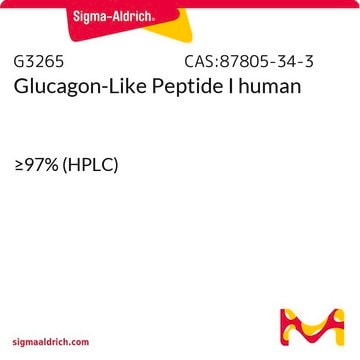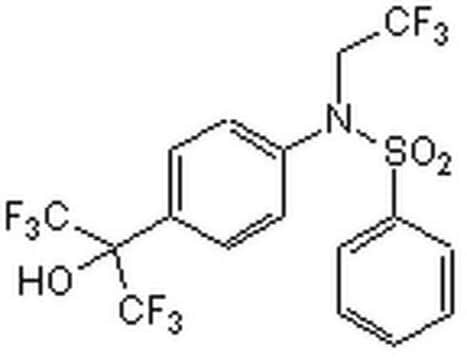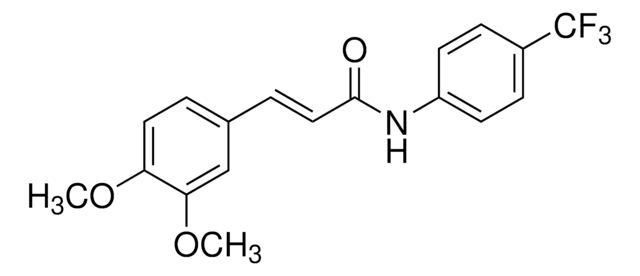G6295
GW3965 hydrochloride
≥98% (HPLC), powder, liver X receptors agonist
Synonym(s):
3-[3-[N-(2-Chloro-3-trifluoromethylbenzyl)-(2,2-diphenylethyl)amino]propyloxy]phenylacetic acid hydrochloride
About This Item
Recommended Products
product name
GW3965 hydrochloride, ≥98% (HPLC), powder
Quality Level
assay
≥98% (HPLC)
form
powder
storage condition
desiccated
color
white
solubility
DMSO: ≥20 mg/mL
originator
GlaxoSmithKline
SMILES string
Cl[H].OC(=O)Cc1cccc(OCCCN(CC(c2ccccc2)c3ccccc3)Cc4cccc(c4Cl)C(F)(F)F)c1
InChI
1S/C33H31ClF3NO3.ClH/c34-32-27(15-8-17-30(32)33(35,36)37)22-38(18-9-19-41-28-16-7-10-24(20-28)21-31(39)40)23-29(25-11-3-1-4-12-25)26-13-5-2-6-14-26;/h1-8,10-17,20,29H,9,18-19,21-23H2,(H,39,40);1H
InChI key
NMPUWJFHNOUNQU-UHFFFAOYSA-N
Biochem/physiol Actions
Features and Benefits
signalword
Danger
hcodes
Hazard Classifications
Acute Tox. 4 Oral - Aquatic Chronic 4 - Eye Dam. 1
Storage Class
11 - Combustible Solids
wgk_germany
WGK 3
flash_point_f
Not applicable
flash_point_c
Not applicable
ppe
dust mask type N95 (US), Eyeshields, Gloves
Certificates of Analysis (COA)
Search for Certificates of Analysis (COA) by entering the products Lot/Batch Number. Lot and Batch Numbers can be found on a product’s label following the words ‘Lot’ or ‘Batch’.
Already Own This Product?
Find documentation for the products that you have recently purchased in the Document Library.
Customers Also Viewed
Articles
We offer a variety of small molecule research tools, such as transcription factor modulators, inhibitors of chromatin modifying enzymes, and agonists/antagonists for target identification and validation in gene regulation research; a selection of these research tools is shown below.
Our team of scientists has experience in all areas of research including Life Science, Material Science, Chemical Synthesis, Chromatography, Analytical and many others.
Contact Technical Service
















